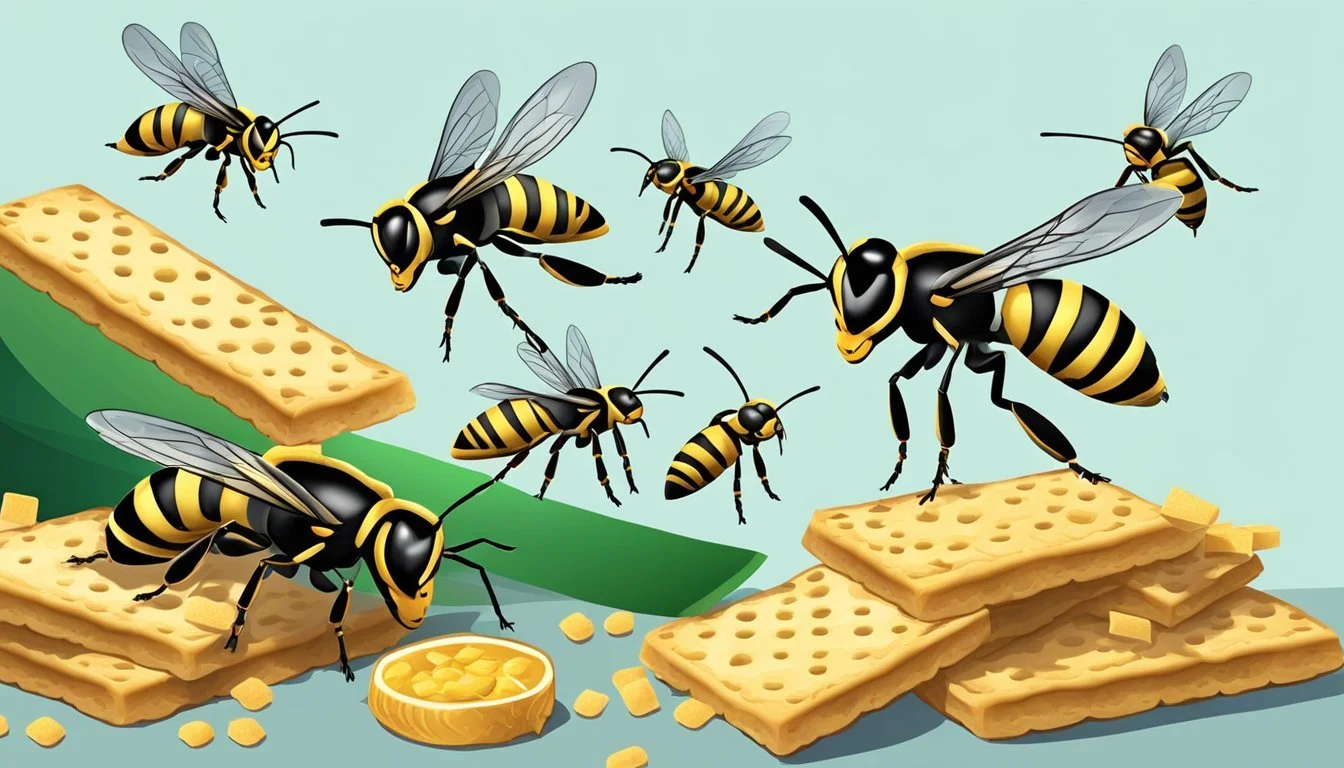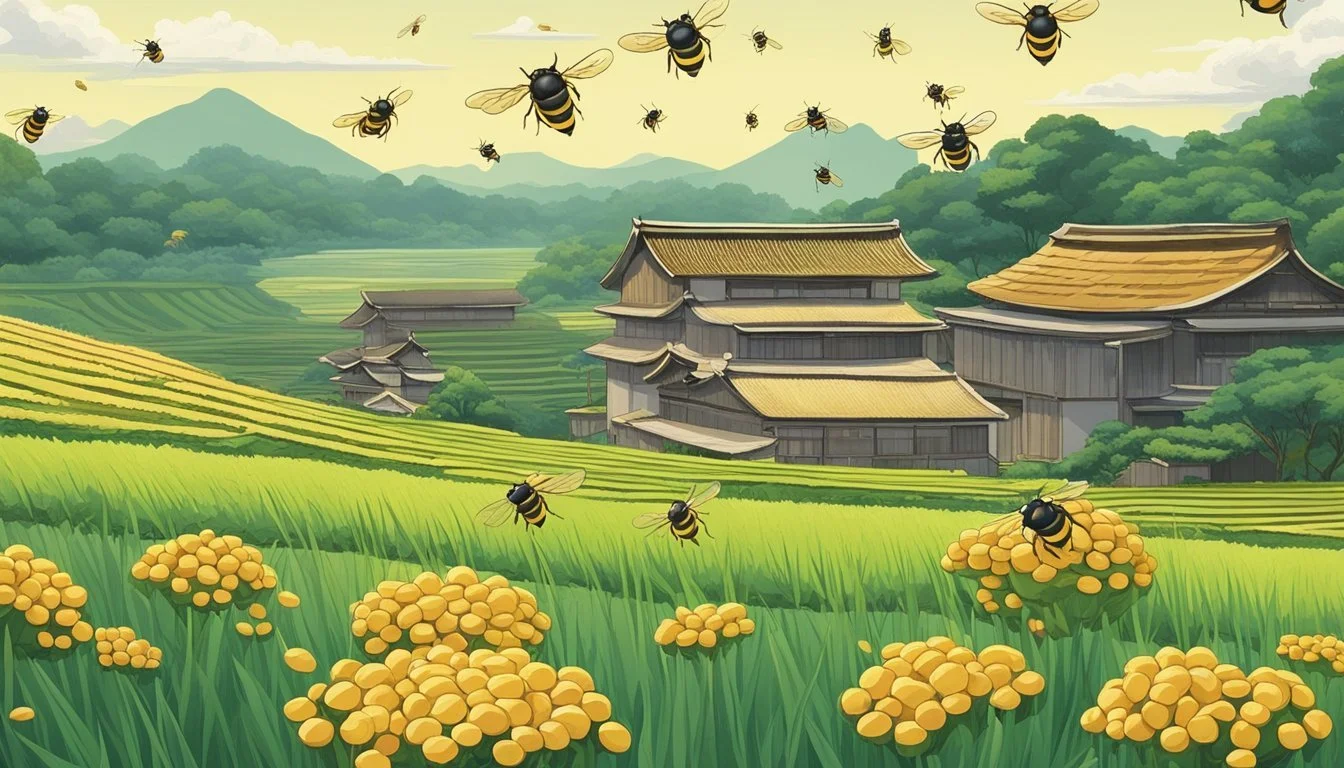Wasp Crackers A Unique Japanese Culinary Adventure with a Sting
Wasp crackers, known as Jibachi Senbei in Japan, are an unconventional snack that combines the traditional senbei rice crackers with a surprising ingredient: wasps. Originating from the Japanese village of Omachi, these crackers are created through a unique process where digger wasps are trapped by locals, predominantly elderly hunters, then boiled and dried before being incorporated into the rice cracker mixture.
This snack is a testament to Japan's ingenuity in creating food products that are both novel and grounded in cultural practices. The use of wasps is not merely for shock value; it adds both flavor and nutrition to the crackers. Wasp crackers are a particular source of protein and considered a delicacy in the region. Despite their striking ingredient, they are reminiscent of traditional senbei in their preparation, often seasoned with familiar components such as soy sauce, sugar, and sesame seeds.
Although they may seem daunting to the uninitiated, Jibachi Senbei have become a regional specialty with growing curiosity and appeal outside their place of origin. They are evidence of Japan's rich gastronomic diversity and the country's ongoing relationship with nature, offering a distinct flavor experience to adventurous snackers and food enthusiasts.
Origins of Wasp Crackers
Wasp crackers are a traditional Japanese snack rooted in the country's history and cultural heritage, particularly in rural areas where insect cuisine is part of local customs.
Historical Context
The history of wasp crackers, known in Japan as Jibachi Senbei, dates back to the Japanese village of Omachi. The snack was created by a fan club called Omachi Jibachi Aikokai. Traditionally, elderly wasp hunters, often in their 80s, would set traps in local forests to catch digger wasps. These wasps are a key component in this unusual and traditional snack.
Culinary Significance
In terms of culinary importance, wasp crackers represent a segment of Japanese cuisine that embraces the use of insects, a practice with a history that can be traced back to the Edo Period. Senbei, or rice crackers, are a conventional Japanese snack, and incorporating wasps demonstrates a blend of innovation with a respect for natural ingredients.
Regional Varieties
While wasp crackers originated in Nagano Prefecture, the tradition of consuming insects is widespread in various parts of Japan, including Hone in Chiba Prefecture, Hokkaido, and the Kanto and Western Kansai regions. However, the Jibachi Senbei variety from Omachi is one of the most distinct examples of this tradition, connecting the local community’s culinary customs with their natural environment.
Ingredients and Preparation
This section provides a detailed look into the components and the method involved in crafting the unique Japanese snack known as wasp crackers, exploring everything from the main ingredients to the particular seasonings that contribute to its distinctive flavor.
Key Ingredients
The main components of wasp crackers, or Jibachi Senbei, consist of:
Rice or Glutinous Rice Flour: Forms the base of the cracker
Cooked White Rice: Often added for texture
Sugar: For a hint of sweetness
Salt: To enhance flavor
Soy Sauce: Adds the umami taste
Sesame Seeds: Used for garnish and flavor
Digger Wasps: The essential, protein-rich ingredient
The Making of Wasp Crackers
The typical process of making wasp crackers includes the following steps:
Capture and prepare wasps by boiling and drying them.
Mix dry ingredients (rice or glutinous rice flour) with wet elements like water, soy sauce, eggs, and often sesame oil.
Incorporate wasps into the mixture.
Shape into small, flat discs and cook, usually by baking or grilling.
Variations and Flavorings
Artisan makers might introduce different elements to alter the flavor profile, such as:
Nori (Seaweed) or Furikake: For a seaweed-infused taste
Black or White Sesame: To add a nutty, aromatic layer
Sweet Rice Flour: For a slightly sweeter and chewier texture
Spices: Such as wasabi, red chili pepper, or togarashi for heat
Associated Dishes and Pairings
Wasp crackers can be enjoyed on their own or as part of a larger meal, commonly paired with:
Japanese Sake or Tea: To complement the snack's savory umami flavor
Onigiri (Rice Balls): As a crispy side to this portable staple
Sushi (What wine goes well with sushi?): Providing a crunchy contrast to the softness of fresh fish dishes
Cultural and Social Aspects
Exploring the intersection of wasp crackers within Japanese culture reveals a snack deeply ingrained in tradition, emerging consumption habits, global curiosity, nutritional profiles, and economic contribution.
Wasp Crackers in Japanese Traditions
Wasp crackers, known as Jibachi Senbei in Japanese, are more than a quirky food item; they symbolize a link between nature and culinary practices. Originating from the village of Omachi, these savory snacks (What wine goes well with savory snacks?) are deeply rooted in the local customs where elderly wasp hunters contribute to community bonding and the preservation of traditional food craftsmanship.
Contemporary Consumption
Today's consumers find wasp crackers as a unique novelty at various outlets including department stores, supermarkets, and street food stands known as Yatai. Often purchased as a souvenir, these crackers represent a contemporary appreciation for sensory exploration in food, aligning with the Japanese expression of gratitude for a meal, Itadakimasu.
Global Perception and Availability
Globally, wasp crackers have garnered attention as an offbeat delicacy. Travel website contributors like Flora Baker and culinary box subscriptions like Bokksu Boutique play a role in amplifying their exotic appeal, while their actual availability remains relatively limited outside Japan, making them a rare find in global markets.
Health and Nutritional Considerations
Wasp crackers offer a high protein content due to the inclusion of digger wasps. As a snack, they cater to those seeking a nutrient-rich option with a savory flavor profile, although dietary preferences and restrictions must be considered due to the unconventional insect ingredient.
Economic Impact and Market Presence
The economic implications of wasp crackers extend beyond a niche snack to the sustenance of local economies. Artisan makers in Japan find support from enthusiasts of traditional, if unusual, Japanese snacks. The production of wasp crackers preserves culinary heritage and supports agricultural communities engaged in sustainable practices.
Consumer Information
Wasp Crackers, a distinctive Japanese snack, have gained notoriety for their unique inclusion of digger wasps. Consumers interested in this novel treat will find the following information essential for purchasing, storing, and incorporating these crackers into their culinary experiences.
Buying Wasp Crackers
Availability: Wasp Crackers, or Jibachi Senbei, can typically be found in Japan, with limited accessibility abroad. Shoppers may locate them in some supermarkets, department stores, or specialty shops such as the Bokksu Boutique. As a popular souvenir item, they are often sought after by adventurous eaters and those looking to experience authentic Japanese flavors.
Supermarkets & Department Stores: Check Asian food sections or special snack displays.
Online Retailers: Some Japanese snack-focused sites may carry Wasp Crackers.
Considerations: Consumers should ensure product freshness and note that availability may be seasonal or dependent on regional demand. Prices can vary widely, so it is advisable to compare options if purchasing as a souvenir or gift.
Storing and Serving Suggestions
Wasp Crackers should be stored in a cool, dry place, similar to how one would keep standard rice crackers. To maintain their crispness, ensure the packaging is properly sealed after opening or transfer them to an airtight container.
Serving: Serve at room temperature to best enjoy their crunch. Pairing with complementary flavors like edamame or a soy sauce dip can enhance the tasting experience.
Ideal Pairings: Edamame, soy sauce, or a light tea.
Avoid Humidity: Keeping them dry is essential for texture preservation.
Creative Uses in Modern Cooking
Wasp Crackers can be more than just a snack; they are a creative ingredient in modern cooking. Chefs and food enthusiasts may crush them to add a savory, crunchy element to various dishes.
Topping: Crumble and use as a topping for salads or soups to add a unique twist.
Seasoning Blends: Mix crushed crackers with furikake or shichimi togarashi for an enhanced flavor profile.
Examples of creative dishes:
Salads: Top green salads with crushed Wasp Crackers for added texture.
Fusion Dishes: Incorporate into sushi rolls or canapés for a crunchy surprise.
By following these guidelines, consumers can enjoy Wasp Crackers in various forms and make the most out of this distinctive Japanese snack.
Conclusion
Wasp crackers, known as Jibachi Senbei in Japan, represent an intriguing merge of traditional snacking and adventurous eating. These snacks incorporate a bold mix of flavors that cater to a niche market, particularly those with an appetite for novel culinary experiences.
The flavor profile of wasp crackers is distinctive. It harmonizes the nutty taste of the roasted wasps with the classic savory crunch of the senbei rice cracker. This unusual combination has the potential to provide a sensory journey quite unlike any other snack.
For consumers seeking to expand their palate, wasp crackers offer a gateway to experience the culinary diversity of Japan. They might pose a challenge to the uninitiated taste buds, but they also offer a window into the resourcefulness and innovation in traditional Japanese snacks.
In crafting these snacks, elderly wasp hunters employ age-old techniques to capture and prepare the digger wasps, ensuring that the snack embodies an authentic aspect of Japanese gastronomy. As such, wasp crackers are more than just a snack; they are a testament to the culinary heritage of regions like Omachi.
It's clear that wasp crackers do not conform to everyone's taste preferences. However, they demonstrate the daring spirit of the Japanese snacking culture and its ability to surprise and engage those looking for taste experiences beyond the ordinary.





